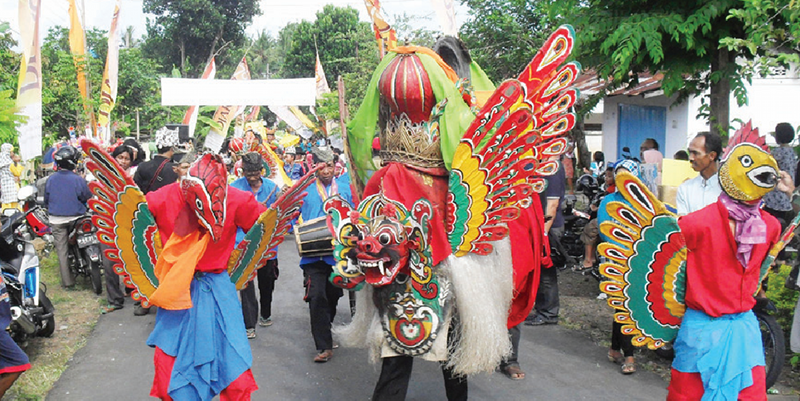Art Shops

Banyuwangi has both traditional and modern shopping center. Both of them have their own attractions. Traditional shopping usually happens in traditional merket. The interesting thing in traditional market in the customers must bargain the good wherever they want to buy, in order to get cheap price. On the other hand, in the modern shopping center, the custommers do not need bargaining the goods, as the prices have been labeled with fixed price.
There are some shopping centers you can visit in Banyuwangi
Downtown :
- Banyuwangi traditional market of Blambangan
- Banyuwangi traditional market
Supermarket and Mini market :
- Wijaya Department Store
- Pelangi Sari-Banyuwangi and East Java typical Cookies mini market
- Arjuna
- Madani
• Gift Shop
Pelangi Sari
Jl. Letkol Ngurah Ray 16, Banyuwangi
Phone : +62 333 426704
Ardial
Jl. Basuki Rahmad 115, Banyuwangi
Phone : +62 333 421717
Bu Is
Jl. wahid Hasyim 79, Banyuwangi
Phone : +62 333 424454
• Batik gallery
Virdes
Jl. Doktren Baitus Salam, Simbar,
Tampo, Cluring, Banyuwangi
Phone : +62 333 394214
Sritanjung
Jl. Tarakan 13, Banyuwangi
Phone : +62 333 415061
Sayu Wiwit
Lingkungan Sri tanjung,
Temenggungan, Banyuwangi
Phone : +62 333 422642
• Painting Gallery
Gallery & Museum Mozes Misdy
Jl. Gatot Subroto 119 Ketapang,
Banyuwangi Phone : +62 333 423573
Fine Art Gallery
Jl. Agus Salim 75, Banyuwangi
Phone : +62 333 422208
S. Yadi. K
Jl. Widuri, gang Anggrek 24
Banyuwangi
Phone : +62 333 421184
• Art Shop
Larus
Jl.Jendral Sudirman 4, Banyuwangi
Phone : +62 333 421445
Widuri Art
Jl. Widuri 4B, Banyuwangi
Phone : +62 333 415927

Banyuwangi has both traditional and modern shopping center. Both of them have their own attractions. Traditional shopping usually happens in traditional merket. The interesting thing in traditional market in the customers must bargain the good wherever they want to buy, in order to get cheap price. On the other hand, in the modern shopping center, the custommers do not need bargaining the goods, as the prices have been labeled with fixed price.
There are some shopping centers you can visit in Banyuwangi
Downtown :
- Banyuwangi traditional market of Blambangan
- Banyuwangi traditional market
Supermarket and Mini market :
- Wijaya Department Store
- Pelangi Sari-Banyuwangi and East Java typical Cookies mini market
- Arjuna
- Madani
• Gift Shop
Pelangi Sari
Jl. Letkol Ngurah Ray 16, Banyuwangi
Phone : +62 333 426704
Ardial
Jl. Basuki Rahmad 115, Banyuwangi
Phone : +62 333 421717
Bu Is
Jl. wahid Hasyim 79, Banyuwangi
Phone : +62 333 424454
• Batik gallery
Virdes
Jl. Doktren Baitus Salam, Simbar,
Tampo, Cluring, Banyuwangi
Phone : +62 333 394214
Sritanjung
Jl. Tarakan 13, Banyuwangi
Phone : +62 333 415061
Sayu Wiwit
Lingkungan Sri tanjung,
Temenggungan, Banyuwangi
Phone : +62 333 422642
• Painting Gallery
Gallery & Museum Mozes Misdy
Jl. Gatot Subroto 119 Ketapang,
Banyuwangi Phone : +62 333 423573
Fine Art Gallery
Jl. Agus Salim 75, Banyuwangi
Phone : +62 333 422208
S. Yadi. K
Jl. Widuri, gang Anggrek 24
Banyuwangi
Phone : +62 333 421184
• Art Shop
Larus
Jl.Jendral Sudirman 4, Banyuwangi
Phone : +62 333 421445
Widuri Art
Jl. Widuri 4B, Banyuwangi
Phone : +62 333 415927





